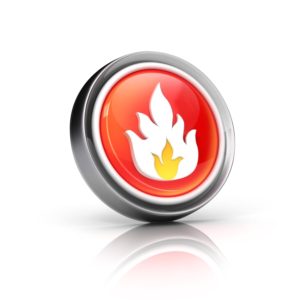
Fires are usually classified according to how they burn and fuel. Class B fires are different from class A fires in the sense that they burn combustible gas rather than ordinary combustibles. As such, class B fires require a different approach from class A fires to combat.
Combustible liquids and gases – The word combustible simply means to ignite or burn and the opposite of it is non-combustible. Class B fires are determined by various combustible gases and liquids.
Below is a list of such liquids and gases:
• Methanol and ethanol
• Gasoline and diesel
• Isopropanol
• Methane
• Propane
• Butane Acetone
• Acetylene
Basically, class B fires have similar elements as those in class A fires. For example for it to burn there must be oxygen, fuel, heat, and a prolonged chemical reaction. It is easy to contain this type of fire if the source is cut off quickly. However, they can cause a lot of damage within a short time – considering the fact that they burn very quickly. Click here for the Best-Selling Fire Safety Products.
It is also important to note that class B fires cannot be put off using water because of their volatility nature. If you try to extinguish a Class B fire using water, you will only be helping it to spread even further. Is that what you really want?
Detecting and fighting class B fires
Class B fires can be very destructive if they are not handled properly. One of the major challenges when it comes to extinguishing class B fire is that they burn so quickly. This means they requires a very fast response – to avoid a lot of damage.
As mentioned earlier, water cannot be used to put off class B fires. This is because water serves as an accelerator for these types of fires.
The best methods of combating class B fires reduction of oxygen supply as well as smothering the flames.
This is the reason why foam is commonly used in putting off class B fires. If the fire breaks out in your kitchen, then potassium carbonate or sodium bicarbonate will be the most effective ways of smothering the flames.
Another effective way of dealing with Class B fires is the use of CO2 – commonly found in most fire extinguishers.
Firefighting equipment
To be able to effectively fight class B fires, firefighters must use appropriate fire extinguishers. This means extinguishers that are specifically designed to put off class B type of fires.
For instance, a class B fire extinguisher should have a dry chemical substance that’s able to stop or break up the chemical reaction propagating the fire. A good example of such a substance is CO2.
Halon has also been used to combat class B fires for a long time – but was discontinued recently because of environmental issues. Instead, most experts recommend the use of FM-200 to serve as a halogenated flame depressant.
Types of fire extinguisher to curb class B fires
CO2
Carbon dioxide fire extinguishers are the most effective when it comes to combating class B fires.
This is because carbon dioxide works by suffocating the fire and denying it the oxygen that it requires to keep burning.
However, considering how quickly CO2 disperses, the best way is to use the extinguisher at close range.
Dry chemical
Dry chemical extinguishers are also recommended for dealing with class B fires. The extinguishers have chemicals that help in disrupting the chemical reaction fueling the fire to burn. The good thing about these extinguishers is that they have a better rage compared to CO2 extinguishers.
Clean agent
Clean agent fire extinguishers contain extinguishing agents that interrupt the chemical reaction of fire by getting read if the heat. The extinguishers can be used both in class A and class B fires.
Foam
Form extinguishers are used to deal with both class B and class A fires. For class B fires, the foaming agent combats the fire by separating oxygen from fuel. It does this by creating a seal within the surface of the flammable gas or liquid.
However, it is important to note that a form extinguisher is only effective if the flammable liquid is not flowing freely.
How to avoid class B fires
Whether it is in your home or commercial property, it is your legal duty to ensure that you reduce the threat of fire as much as possible. This involves putting measures in place that reduce the possibility of causing a class B fire.
For example, if you are planning to use BBQ, ensure that you have met all the required conditions. You should also keep your home or store clean and free from corrosive liquids.
Check any equipment that requires repair before they reach a level where they can cause a class B fire.
Last but not least, ensure that you have the right fire extinguishers in place for class B fires. You should also ensure that all your family members or staff are trained on how to handle the extinguishers. Click here for the Best-Selling Fire Safety Products.